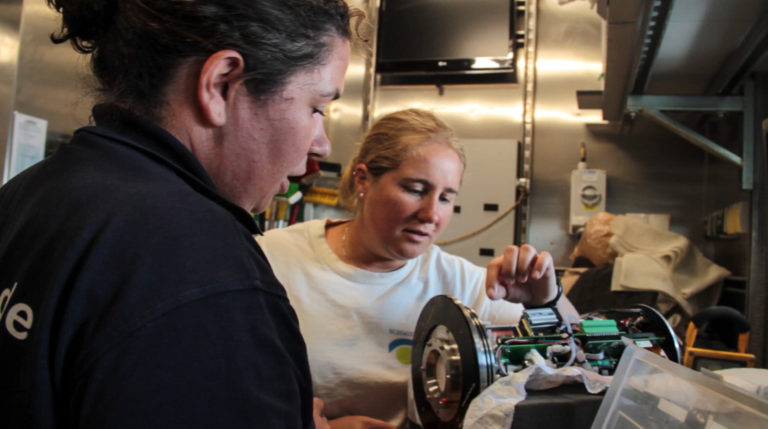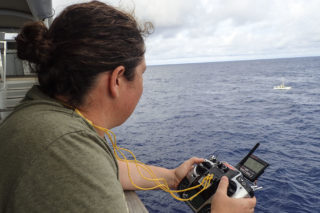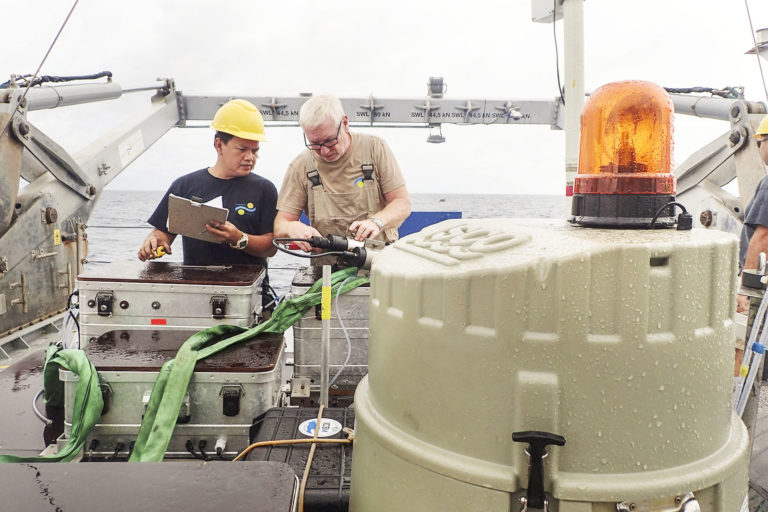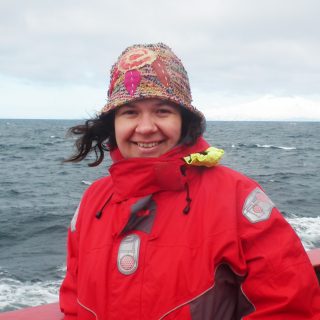I have been on a lot of research cruises, and one thing that never stops surprising me is how quick and efficient teams need to be in order to solve problems onboard. You may find yourself in a situation that requires a solution while you are in the middle of the ocean. Nowadays we at least have the internet to ask for technical support but in my first cruises there was nothing.
Sniffel Down!
For example, in this cruise some seawater entered one very important instrument: the sniffel. This drifting buoy allows us to measure the velocity of the exchange of carbon dioxide between the atmosphere and the ocean, so losing it would be a big blow to our research.
If the buoy had been damaged in normal conditions in a lab, we would send the whole instrument back to the manufacturer. If you were to open it, you would perhaps discover you needed a long brush to reach one end, so you would stop, look for the right brush, order it, wait for it to arrive and then use it and carry on until you discovered you need yet another piece. Then you would repeat the process.
Here, at sea, we didn’t have the option to order anything, and therefore needed to think outside the box. We took advantage of the transit days: we opened and worked with every single part that my instrument’s manual told us not to touch (I even discovered there is gold inside one fundamental piece!). We created a brush that was able to reach any component inside the instrument, we dried the sensor by ourselves, and we even managed to regulate the air pressure inside of it by using an oxygen pump from Falkor’s sick bay.


Conquer Your Fear
I really like these kinds of challenges because they allow you to discover skills you never thought you had. In one cruise, one crew member thought I was an electronic engineer, but at that time all I knew was that a red cable must go with a red one, and a black cable must be aligned with a black one! Now I know a bit more just because during that cruise I conquered my fear and dared to open and touch those circuits.
Here in Falkor the Marine Technicians and the Engineers make those challenges so much easier and faster to overcome. The other day a little piece of the Sea Surface Scanner was damaged during recovery. I am sure it took less than 5 minutes from the time we told the Chief Engineer about the issue to the moment we had a new piece back in the scanner and ready to go for the next job.
So every time I am at sea, I know it will be stressing at moments when I’ll think I destroyed something. However, in trying to repair it and (in an amazingly high number of times) successfully doing it, I find great pleasure and a vast sense of accomplishment.


